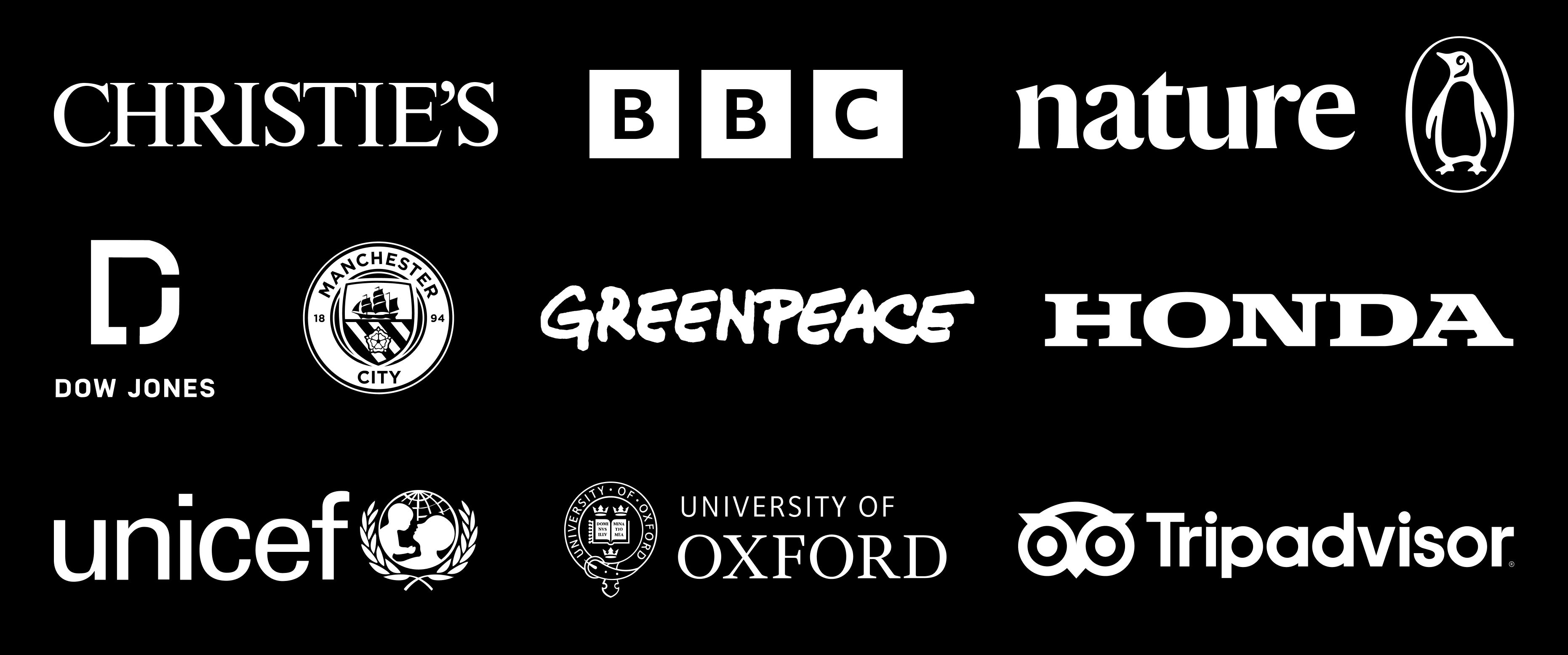Content marketing metrics: an introduction for content teams

Reporting on the right metrics is one of the most important things to get right in content marketing. This is because these metrics have an outsized impact on your priorities.
By Matt McGregor
By Matt McGregor
If you report primarily on organic traffic volume, for example — and are getting high-fives for those big numbers you’re pulling in — you’re unlikely to invest in thought leadership content, even if that’s a better investment for your business.
In this guide, we’ll run through the most important content marketing metrics. This will help you get better at reporting on the impact of your content marketing program.
We’ll cover:
Start creating with Shorthand
It's the fastest way to publish beautifully engaging content marketing, reports, internal comms, and more.
Loved by the world's most iconic brands
Loved by the world's most iconic brands
What are content marketing metrics?

Content marketing metrics are systems of measurement that help you understand how your content is performing.
Ideally, these metrics help you understand the impact of your content, track your progress towards your marketing goals, and make data-driven decisions to improve your strategy.
Content marketing metrics are ideally a subset of the metrics the marketing team as a whole will report on. These, in turn, are ideally a subset of the metrics the business reports on to its executive team and board.
… Ideally.
How to decide which metrics to pay attention to

The difficulty with content marketing metrics is that there are so damn many of them. This is a problem for digital marketing in general.
Analytics tools like Google Analytics offer many different ways to measure and report on content performance. Other marketing tools — such as Hubspot or Marketo — offer even more data for content marketers.
For some metrics, like brand awareness, you might find that there is no single tool that will get you the number you need.
So how do you know what to pay attention to? Unfortunately, there are no absolutes, but a basic rule is that your metrics should help you do a better job and build a case for content marketing ROI (return on investment).
Here are some questions to ask yourself:
- Does this help me contribute to our marketing goals? Your marketing team should have a documented strategy, and that strategy should list strategic priorities and key performance indicators (KPIs). Learn them, as your content needs to make a material contribution to them — that’s your job.
- Is this an area I should improve? There’s no point obsessing over backlinks and domain authority if you’re solely focused on paid campaigns. Remember, your metrics should help you improve your content marketing efforts.
- Can I measure this easily? Some metrics, like social media shares and newsletter signups, are relatively easy to measure using built-in analytics tools. Different metrics, like lead generation and conversion rates, may require more advanced tracking systems.
- What are my peers measuring? While every content marketer is different, it’s worth learning from peers who are working on similar problems. To be clear, we’re not suggesting that you copy all the latest trends on LinkedIn. Instead, grab a coffee with someone you respect and learn what they pay attention to.
- Do I have a choice? Not all content marketers get to choose what they report on. This can be a problem, and sometimes leads to perverse incentives. Unfortunately, this is common across the profession. To prioritise better metrics in this situation, you need political nous, seniority, or a track record of success.
Remember, the metrics you choose to measure should be specific to your business and marketing goals. It's important to regularly review and update your metrics as your strategy evolves.
How to report on content marketing

Once you have identified the metrics you want to track, it's important to report on them consistently — even if you’re not sure anyone is paying attention.
This point is crucial, and it’s worth dwelling on. Often, it can feel like no one is paying attention to content marketing. But someone will, sometime, and they’re going to come with a bunch of probing questions. It can be unwise, professionally, not to have answers on hand.
As Tracey Wallace says, it’s worth operating with a healthy sense of paranoia.
But what’s the best way to go about it? Again, there are no hard and fast rules, and content reporting frameworks vary from team to team. That said, there are some general rules by which to abide.
- Tell a consistent story. Content marketing projects typically don’t deliver results immediately. Be prepared to patiently explain what you’re doing, and why, month after month.
- Be prepared to show your working. Your reporting will necessarily show high-level trends. But someone, sometime, will want to dive into your data. It’s best to have it close to hand.
- Show the bad news. One counter-intuitive way to build credibility with executives is to be open about failure.
- Visualise your data. Use charts, graphs, and tables to visually represent your key metrics. This makes it easier for stakeholders to understand and interpret the metrics you are tracking.
- Explain your progress. Give a qualitative update about what you’re focusing on, what you’ve learned, and what you have planned — without giving a laundry list of tasks. Remember: No one cares how busy you are. They just care that you are getting closer to achieving results for the business.
Content marketing metrics and how to track them

Now let's dive in. This list is not exhaustive, but should give you a sense of the most important numbers you may wish to track.
Organic traffic
Organic traffic is a subset of website traffic that shows the number of people that come to your website through search engines. It indicates how well your content is ranking in search engine results pages (SERPs) and — more specifically — how many people are clicking through to your site.
To track organic traffic, use tools like Google Analytics. Monitor your organic search traffic over time, for changes or trends. A decline in organic traffic may indicate a need for SEO optimisation.
Keywords
In addition to tracking organic traffic, you may also monitor your performance in search engine results pages (SERPs). This includes tracking your rankings for relevant keywords and monitoring changes in your search visibility.
Use tools like Google Search Console, Semrush, or Ahrefs to track your keyword rankings.
Unique page views
Unique page views measure the distinct number of individuals who have accessed a specific webpage during a given period. Unlike regular page views, which count all visits including repeat views from the same user, unique page views provide a clearer picture of the actual audience size your content reaches.
Unique page views can be measured in Google Analytics or other analytics tools.
Number of pages per session
Number of pages per session refers to the average count of web pages a user views during a single visit to your website. This metric provides insights into the depth of a user’s interaction with your site.
Measure the number of pages per session in analytics tools like Google Analytics.
New visitors
New visitors are individuals who access your website for the first time during a specific period.
You can measure the number of new visitors through analytics tools such as Google Analytics, which distinguishes between users who have previously interacted with your site and those who are engaging with your content for the first time.
Returning visitors
Returning visitors are users who visit your website again. This metric can show that your high-quality content is building brand awareness.
You can measure the number of returning visitors using analytics tools like Google Analytics, which provide data on the frequency of visits from users who have engaged with your content previously.
Shares on social media
Social media shares are an important sign that a piece of content is good enough for someone to distribute to their network. This can be a useful leading indicator that the content of a specific marketing campaign is resonating with your target audience.
You can track engagement metrics like social shares on platforms like Facebook, Twitter, LinkedIn, and Instagram directly. You can also use social media analytics tools to identify which types of content generate the most shares. Another way to track the impact of social media is to look at referral traffic in Google Analytics.
Click-through rate
Click-through rate (CTR) measures the percentage of people who click on a specific link or ad. In the context of content marketing, CTR is often used to measure the effectiveness of headlines, meta descriptions, and call-to-action (CTA) buttons.
To calculate CTR, divide the number of clicks by the number of impressions (the number of times the link or ad was shown).
Track CTR using tools like Google Analytics or social media analytics platforms. Monitor changes in CTR over time and experiment with different strategies to improve your click-through rates.
Time on page
Time on page measures how long visitors spend on a specific landing page of your website. A longer average time on page suggests that your content is valuable and engaging, while a shorter average time may indicate a need for improvements.
Use tools like Google Analytics to track the average time on page for different pages of your website.
Podcast downloads
If you produce podcasts as part of your content marketing strategy, tracking podcast downloads is an important metric to measure success. Downloads indicate how many people are interested in your podcast content and actively consuming it.
Use podcast hosting platforms to track and measure your podcast downloads.
Backlinks
Backlinks are links from other websites that point to your content. They are an important metric for measuring the authority and quality of your content. Backlinks indicate that other websites find your content valuable and are willing to reference it.
Track backlinks using tools like Google Search Console or third-party backlink analysis tools, including Semrush or AHRefs.
Bounce rate
Bounce rate measures the percentage of visitors who leave your website after viewing only one page. A high bounce rate may indicate that your content is not engaging or relevant to your audience. It could also suggest potential issues with your website's user experience or page load times.
Track bounce rate using tools like Google Analytics.
Newsletter signups
Newsletter signups measure the number of people who subscribe to your email newsletter. You can also identify the sources and strategies that drive the most signups.
Track newsletter signups using email marketing software or analytics tools.
Newsletter open rates
Newsletter open rates measure the percentage of subscribers who open your email newsletters. This metric indicates the effectiveness of your subject lines and the interest in your content. You can monitor changes in open rates and experiment with different subject lines and content formats to improve engagement.
Track newsletter open rates using email marketing software.
Note: changes in privacy policies from providers like Apple are reducing the accuracy of newsletter engagement metrics.
Leads
Leads measure the number of potential customers who have shown interest in your products or services. This metric indicates the effectiveness of your content in generating customer interest and engagement.
Track leads using lead generation forms, contact forms, or CRM software.
Qualified sales pipeline
Qualified sales pipeline measures the number of leads that have progressed through the sales funnel and are considered qualified prospects by your sales team. This metric indicates the effectiveness of your content in driving conversions and revenue.
You can track qualified sales pipeline using CRM software or sales analytics tools.
Content marketing metrics FAQs
What’s the point of tracking content marketing metrics?
The right metrics help you measure impact, shape priorities, and make smarter strategy decisions. They keep reporting grounded in business goals — not just vanity numbers like raw traffic alone.
How do I know which metrics matter for my team?
Ask: does this metric help you contribute to your documented marketing goals? Will it help you improve your content or make better decisions? Can you measure it reliably with your tools and tracking setup?
Not every metric matters to every team — focus on those that help you drive performance and make a case for content’s value.
Are some metrics better than others?
There’s no universal “best” metric. Some metrics — like organic traffic — indicate visibility, while others — like conversions — show business outcomes. Which are most important depends on where your strategy is focused and what outcomes you’re trying to influence.
What’s the difference between measuring and reporting?
Measuring is collecting data. Reporting is telling a story with it. A good report highlights trends, shows context, and doesn’t hide bad results — because stakeholders need a realistic performance picture over time.
Should I share all my metrics with stakeholders?
Not necessarily. Lead with metrics that tie to strategic goals and outcomes, and have deeper data ready for people who want to explore further. Consistency and clarity matter more than overload.
What should I do if leadership only cares about vanity metrics?
It’s common for teams to be stuck reporting on metrics that don’t reflect real value. Keep reporting consistently, add context, and build credibility over time — even if your ideal metrics aren’t recognised instantly.
How often should I revisit my metrics?
Regular review is important because your strategy and goals will evolve. Metrics aren’t “set and forget” — update them as your content priorities and business context shift.
What tools should I use to track content metrics?
Most teams use a mix of web analytics, marketing automation dashboards, SEO and search performance tools, and CRM or conversion tracking systems. Choose tools that reliably capture the signals you care about. For helpful pointers, check out our guide, How to measure content success.
Does content marketing always produce immediate results?
No — content marketing often plays out over weeks or months. That’s why consistent reporting and trend tracking matter more than short-term wins.
What’s one common mistake teams make with metrics?
Focusing on metrics because they’re easy to measure — instead of those that link to business priorities. Make sure what you track helps you understand value and improve your work, not just fill a dashboard.
There’s a lot to remember when it comes to keeping up with your content marketing metrics. But the skills and tools required to do it are not difficult to master — the hardest part is staying organised. Begin with a good routine, so you are tracking, measuring, and optimising as you go along, and you’ll be making your case and informing future content decisions in no time.
Start creating with Shorthand
It's the fastest way to publish beautifully engaging content marketing, reports, internal comms, and more.







